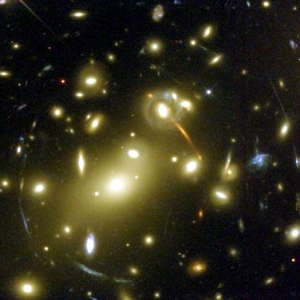Gravitational Lensing in the Galaxy Cluster Abell 2218
Click on image for full size
NASA / A. Fruchter / STScI
Gravitational Lenses - Nature's Telescope
The possibility that light could be bent by gravity was predicted by
Albert Einstein. This was seen soon after he
predicted it. People normally think of glass or plastic lenses as
bending light. So we call any object that bends light rays using gravity a
"gravitational lens."
In the cluster Abell 2218 (pictured here), distant blue galaxies behind the large
cluster of galaxies are "squished" into a circular shape around the
middle of the foreground cluster. This is from gravitational lensing.
You might also be interested in:
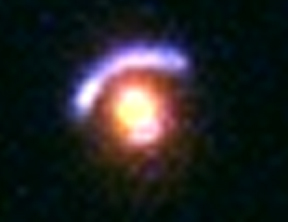
Some really cool pictures were taken by NASA's Hubble Space Telescope! The gravity of galaxies and black holes is able to bend the light coming from behind it. This makes a lens of light around the object.
...more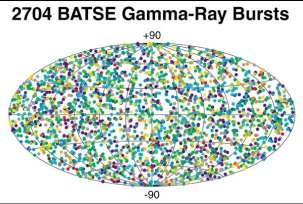
Satellites in the 1960's looked for a type of light called Gamma Rays. They found bursts of Gamma Rays coming from outer space! They can't hurt you. They are stopped by the Earth's atmosphere. We have
...more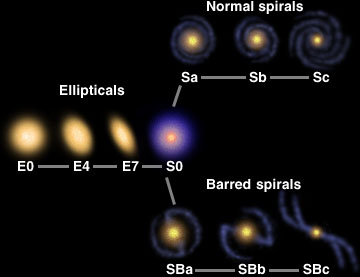
When we look up at the night sky, we notice that there are many stars in our sky. Stars must like to live together in star cities - galaxies. Our city of stars is called the Milky Way, and it is home to
...more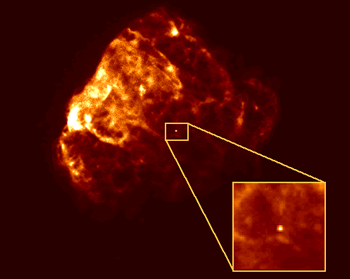
Neutron Stars form when really big stars die. When such a star runs out of fuel its center begins to collapse under gravity. When the center collapses the entire star collapses. The surface of the star
...more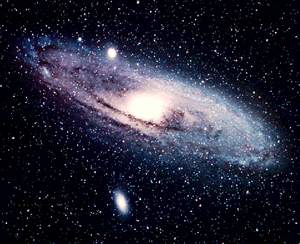
Spiral galaxies may remind you of a pinwheel that blows in the breeze. Like a pinwheel, a spiral galaxy is rotating, and it has spiral arms. Through a telescope or binoculars,a spiral galaxy may look
...more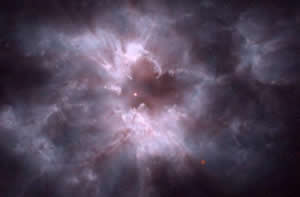
When stars like our own sun die they will become White Dwarfs. As a star like our sun is running out of fuel in its center it grows into a red giant. This will happen to our sun in 5 Billion years. The
...more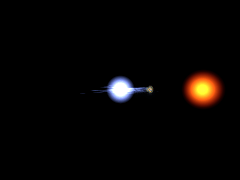
What's in a Name: Arabic for "head of the demon" Claim to Fame: Represents Medusa's eye in Perseus. A special variable star that "winks" every 3 days. Type of Star: Blue-white Main Sequence Star, and
...more


